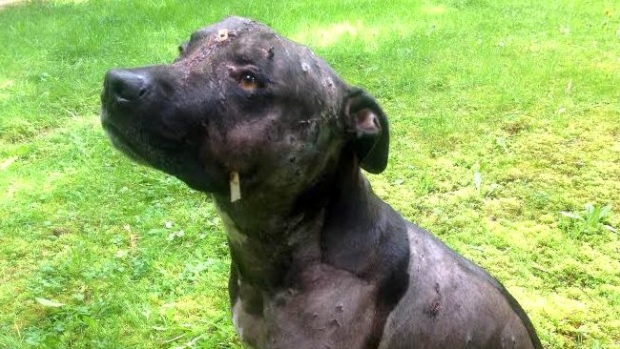
© Ron Smid/FacebookBruce, a 4-year-old pit bull, has a drainage tube running from his forehead to the side of his cheek to help him recover from a cougar attack.
A four-year-old pit bull is recovering after being attacked by a cougar near Powell River, B.C., last week.
Bruce, who lives with his owner Ron Smid in a secluded area, disappeared into the woods last Thursday, April 23, returning a few minutes later — bleeding.
"He must have caught a scent and he didn't want to be called back," said Smid.
It wasn't until Bruce was examined by the vet and his body shaved, that the full extent of his injuries could be seen.
There were puncture wounds all over the dog's body and lacerations across his head.
"The largest wound that is apparent is a large tooth-like fang that went through the middle of his skull and it actually penetrated right to the bone," said Smid.
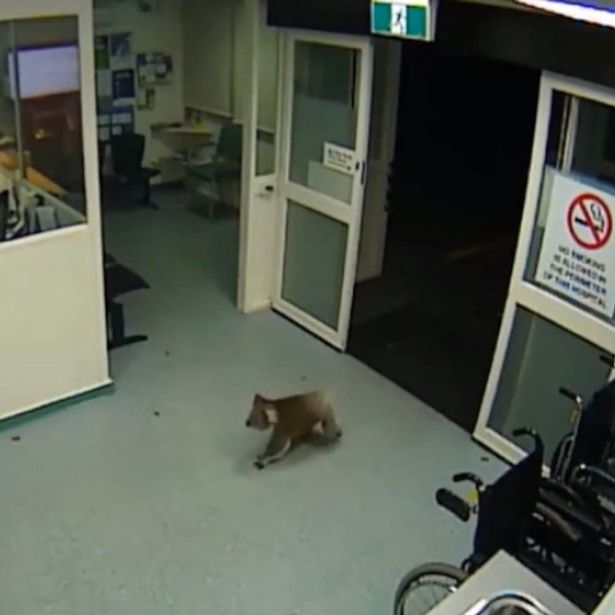
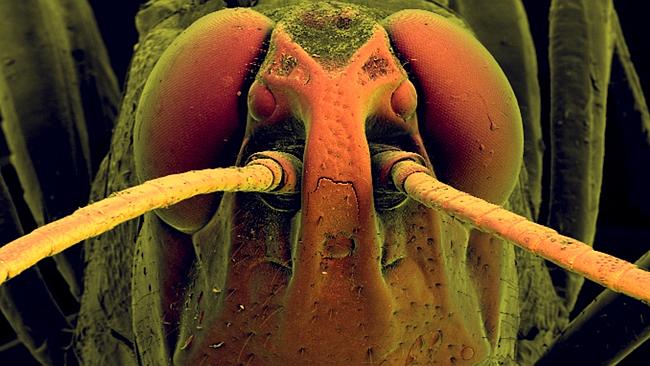
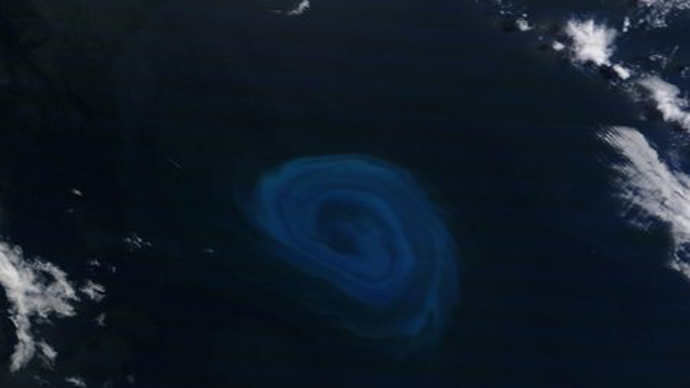

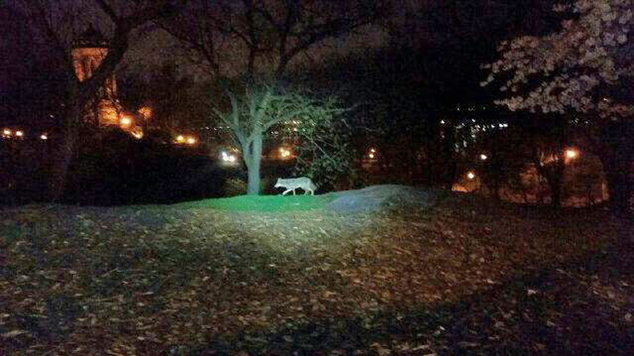


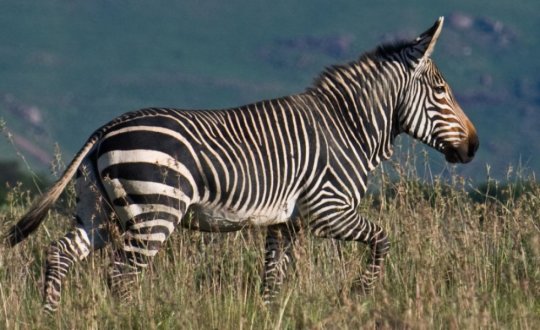

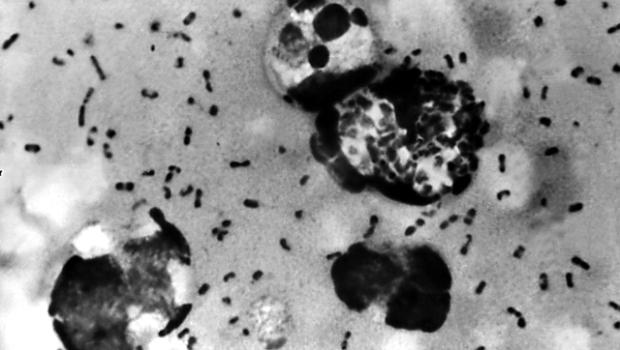



Comment: See also this sample of recent reports of coyote attacks on dogs:
Coyote fights 2 large dogs in back yard in Pinellas, Florida
Coyotes seen attacking large dogs in Stamford, Connecticut
More 'rare' urban coyote attacks on Indiana dogs
Spike in coyote attacks on animal pets in Claremont, California
Coyotes killing pets in Seal Beach, California